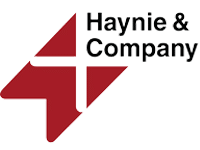03 Nov 2025 IRS Guidance Lowers Investment Threshold for Rural Opportunity Zones
Opportunity Zones (OZs) were created under the 2017 Tax Cuts and Jobs Act as a way to defer and potentially eliminate capital gains taxes by reinvesting in designated low-income communities.
Investors who reinvested capital gains into Qualified Opportunity Funds (QOFs) could defer tax on those gains until December 31, 2026. In addition, if the QOF investment is held for at least 10 years, any post-investment appreciation may be excluded from capital gains tax entirely.
On September 30, 2025, the IRS released Notice 2025-50, introducing new incentives for investments in Opportunity Zone properties located in areas newly defined as “rural.” This change, which took effect retroactively as of July 4, 2025, applies to existing OZ tracts designated in 2018 and affects more than 3,300 census tracts.
Let’s take a closer look at the rule change and what it means for investors.
A new rural designation
Historically, the Opportunity Zone statute didn’t differentiate between urban and rural tracts. Eligibility was based solely on census data identifying low-income areas.
IRS Notice 2025-50 introduces a new operational definition of “rural” that creates a separate incentive structure. Under the new rule, a “rural area” is defined as any census tract that is:
- Not part of a city or town with a population greater than 50,000, and
- Not an urbanized area adjacent to such a city or town.
Using this definition, the IRS identified 3,309 census tracts within the existing 8,764 OZs certified in 2018 that now qualify as “comprised entirely of a rural area.” These tracts are listed in the appendix to the Notice.
Easing the capital burden in rural opportunity zones
Under the original rules, investors could defer and potentially eliminate capital gains taxes by reinvesting those gains into a Qualified Opportunity Fund (QOF) within 180 days of a triggering sale, such as the disposition of stock, real estate, or a closely held business interest.
When acquiring existing property, investors had to invest an amount equal to the building’s basis (excluding land) in improvements within 30 months – a requirement known as the “substantial improvement” test.
Now, that threshold has been cut in half – to just 50% – for properties located entirely within one of the newly designated rural zones. This retroactive rule applies to tangible property already held, currently being improved, or newly acquired after July 4, 2025.
For example, let’s say you sold a commercial property, triggering a $1 million capital gain. Within 180 days, you reinvested that gain into a QOF.
The fund acquired an old warehouse in a rural Opportunity Zone for $2 million, with $1.5 million allocated to the building and $500,000 allocated to the land.
Under the old rules, the fund would have needed to invest $1.5 million in improvements within 30 months to meet the “substantial improvement” test. But under the new guidance, the required improvement would be $750,000 for qualified rural property.
Enhanced basis step-up for qualified rural opportunity funds (QROFs)
Separate from Notice 2025-50, recent legislation created an additional incentive for investments made through Qualified Rural Opportunity Funds (QROFs) – funds that invest exclusively in rural-designated Opportunity Zone tracts. QROF investors receive a 30% step-up in basis after a 5-year holding period (versus the historical 10% step-up for standard QOFs). This QROF basis rule is generally effective for investments beginning in 2027.
How the step-up works
When a taxpayer reinvests an eligible capital gain into a QROF, the gain is deferred under the OZ regime.
After 5 years, the investor’s basis in the deferred gain increases by 30%, reducing the amount recognized when the deferral period ends (the “inclusion” date). If the QROF investment is held for 10+ years, any post-investment appreciation in the QROF interest can be excluded from capital gains tax, consistent with standard OZ rules.
Illustration
An investor defers $1,000,000 of gain into a QROF. After 5 years, the basis in the deferred gain increases by $300,000. When the inclusion event occurs, only $700,000 of the original deferred gain would be recognized (before considering other adjustments).
The IRS has indicated that additional guidance is forthcoming to clarify QROF qualification, interaction with existing OZ rules, and any anti-abuse provisions.
Next steps
While the tax incentives are powerful, OZ investments are not without complexity. Investors must navigate strict compliance requirements, multi-year hold periods, and potential liquidity constraints. The benefits also rely heavily on future tax law remaining stable – something that may change depending on legislative or regulatory shifts. Due diligence, legal structuring, and ongoing fund management are essential to realizing the full potential of these incentives.
If you’re evaluating whether your project qualifies under the new rural definition or considering an Opportunity Zone investment and would like more personalized guidance, please contact our office.
Contact The Haynie & Company CPA Firm For Tax Advisor Services
DO YOU HAVE QUESTIONS OR WANT TO TALK?
Fill out the form below and we’ll contact you to discuss your specific situation.

